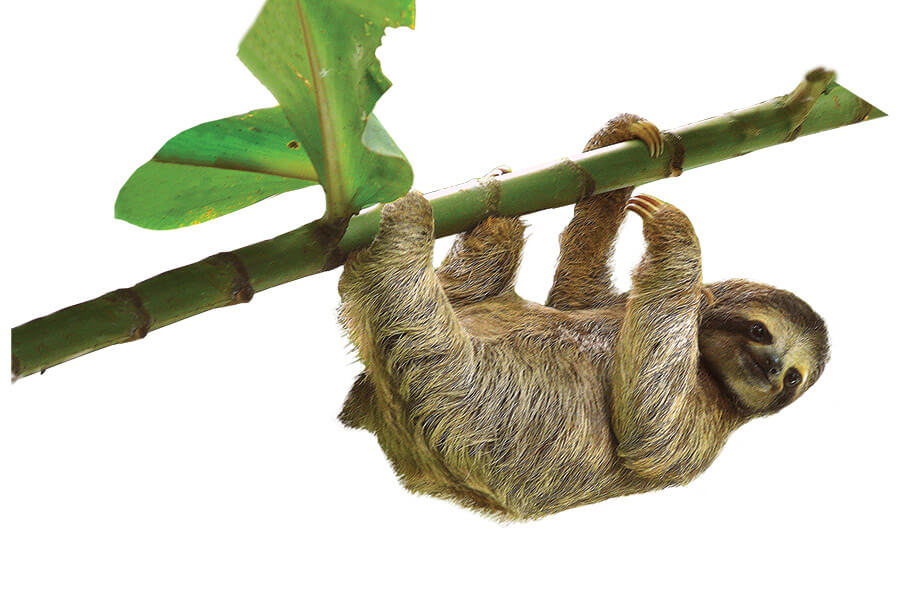The Secret World of Sloths

Three-toed sloths risk life and limb to go to the bathroom, but the act is a mutually beneficial one for the slow-moving animal and the moths that hitch a ride … to the forest floor. Photo: Istock.
Turns out those weekly bathroom breaks are part of a grand plan.
Once a week, three-toed sloths leave the safety of the upper branches of the forest to take care of business.
This harrowing, and excruciatingly slow, trip to the restroom may be key to staving off starvation for the mammals, which get by on a diet of leaves, says Jonathan Pauli, a UW professor of forest and wildlife ecology who studies the deliberate, molasses-slow animals in northeast Costa Rica.
“What is striking about this behavior is the vulnerability,” Pauli says. “It’s very dangerous. And the energy required is non-negligible for an animal that has such a restricted diet.” More than half the deaths Pauli and collaborators documented during field research came at the claws and teeth of predators — including foxes, jaguars, and ocelots — pouncing on sloths on or near the ground.
Pauli wanted to figure out why the sloth risks becoming such an easy meal. Previous explanations included communication with other sloths and a gracious gift of fertilizer to the just one or two trees a three-toed sloth calls home. Neither of those notions seemed worth it to Pauli, who was struck by another possibility: the insects and algae living in the animal’s wet, fertile fur may provide important supplementary nutrition.
When a sloth squats to do its business, some female pyralid moths will emerge from its fur to lay their eggs in the dung. The moth larvae then eat their way out of the sloth waste, emerging as adults that flutter back up into the tree overhead. There, they find a sloth and render themselves nearly flightless, damaging their wings to burrow into the wet, matted fur to mate and renew their life cycle.
Three-toed sloths tend to appear a mottled green color, thanks to algae growing in a combination of water trapped by unique cracks in the animal’s hair and nitrogen released by the fungi that break down dead moths. That camouflage may protect treed sloths from flying predators. And researchers found the high-fat algae in samples taken from the stomachs of three-toed sloths.
“It could be that even just small amounts of the algae make ends meet, if only because it’s so rich in lipids,” Pauli says.
Why does the sloth poop in the woods? Maybe because it’s hungry. Maybe to better hide among the leaves. Probably to lend the moths a three-toed leg up. And that, according to Pauli, is another lesson in the complex and unusual way organisms as different as a tiny moth and a seemingly over-sized, tree-confined mammal need each other to get along.
“There’s some grandeur in these systems of mutualism,” he says. “It makes us think about organisms that exploit such narrow niches.”
Published in the Summer 2014 issue



Comments
No comments posted yet.